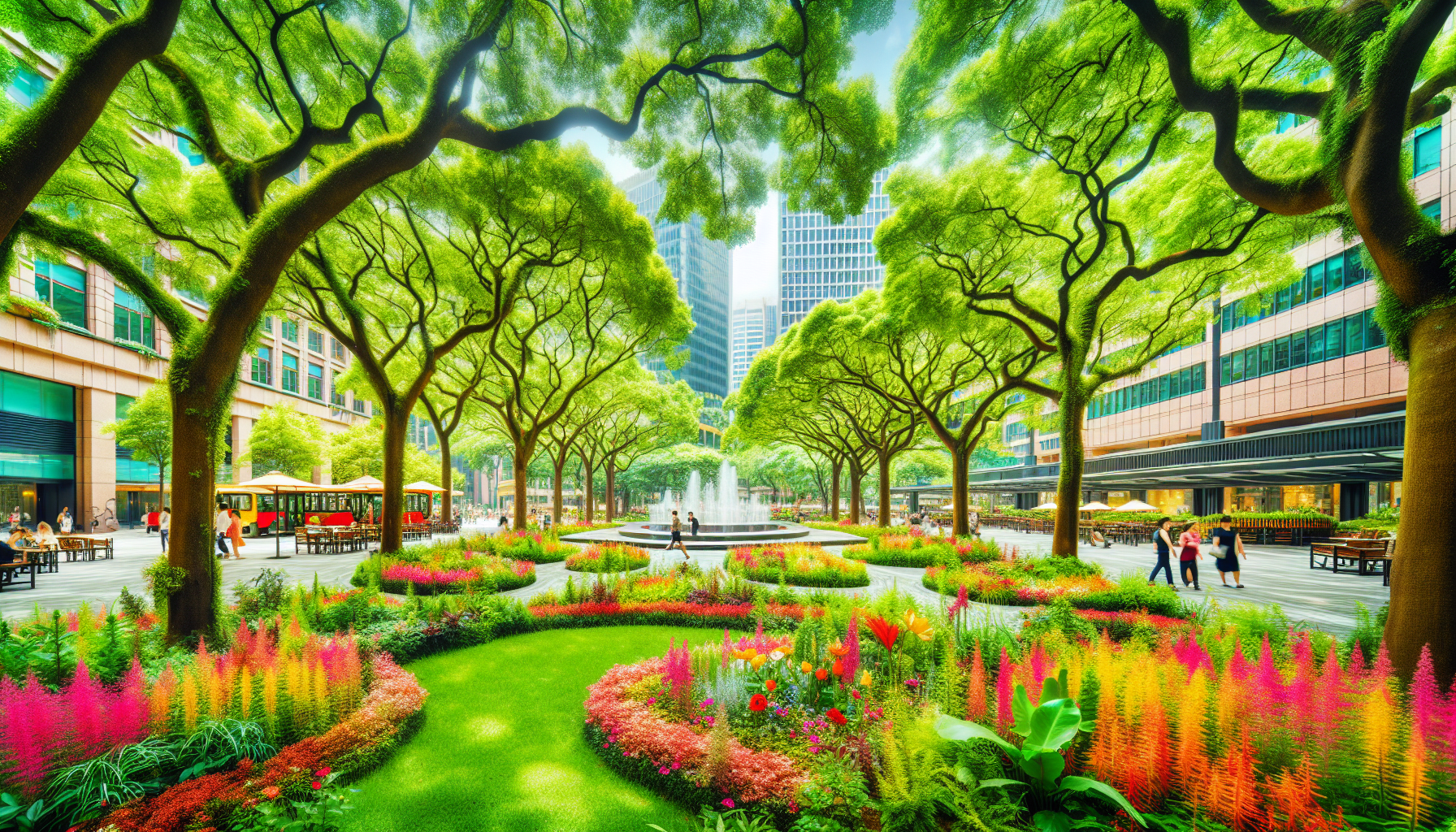Urban green spaces, often seen as the lungs of a city, play a crucial role in promoting environmental health. Amidst the concrete jungles and bustling streets, they serve as vital sanctuaries that significantly impact air quality, biodiversity, and the overall well-being of communities.
At the heart of their importance is air quality improvement. With rapid industrialization and urbanization, cities around the world are grappling with deteriorating air conditions, posing severe threats to public health. Urban green spaces combat this issue by acting as natural air filters. Trees and plants within these areas absorb pollutants and harmful gases such as carbon dioxide, sulfur dioxide, and particulate matter, while releasing oxygen. They help in moderating temperature extremes, reducing the urban heat island effect, and thus improving the microclimate. By increasing the quantity and quality of greenery in urban settings, cities can work towards mitigating the adverse effects of climate change and air pollution, making the air we breathe cleaner and healthier.
Beyond air quality, urban green spaces are critical for supporting biodiversity. In densely populated urban areas, natural habitats are often fragmented or lost entirely, threatening the survival of various species. Parks, gardens, and urban forests offer essential habitats and migratory corridors for birds, insects, and other wildlife. These spaces sustain local ecosystems by providing food, shelter, and breeding grounds, thus enhancing biodiversity even in urban settings. They create opportunities for native species to thrive, contribute to genetic diversity, and maintain ecological balance. Furthermore, urban green spaces offer residents a glimpse into nature, fostering a deeper appreciation and awareness of the importance of conserving biodiversity.
The benefits of urban green spaces extend to human well-being, profoundly affecting the physical and mental health of communities. These areas offer a serene escape from the fast-paced urban life, providing people with opportunities for recreation, relaxation, and social interaction. Access to green spaces has been linked to reduced stress levels, lower incidences of anxiety and depression, and improved mood and cognitive function. Physical activities such as walking, jogging, or playing sports become more enticing and accessible, leading to healthier lifestyles and reduced risks of chronic diseases. Moreover, green spaces facilitate community engagement and social cohesion, where people from diverse backgrounds come together, fostering a sense of belonging and enhancing community resilience.
Incorporating green spaces into urban planning is not without its challenges. Rapid urbanization often prioritizes infrastructure development over environmental considerations, leading to the undervaluation of green spaces. However, recognizing and integrating their multifaceted benefits into urban strategies is crucial for sustainable development. Policymakers, urban planners, and communities need to work collectively to preserve existing green spaces, create new ones, and ensure equitable access for all. Innovative solutions like green roofs, vertical gardens, and tree-lined streets can complement traditional parks and gardens, maximizing green space within limited urban areas.
In conclusion, urban green spaces are indispensable in nurturing environmental health and community well-being. Their role in improving air quality, supporting biodiversity, and enhancing the quality of life underscores the need for cities to prioritize and invest in green infrastructure. As urban areas continue to grow, weaving nature into their very fabric will be essential, creating sustainable, healthy, and flourishing cities for future generations.
